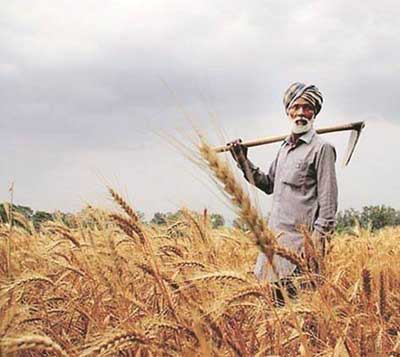Relevance: GS-3. Indian Economy and issues relating to planning, mobilization, of resources, growth, development and employment; Inclusive growth and issues arising from it.
Key Phrases: Farm loan waiver, NPAs, Asset Reconstruction Company, Bad Bank, NARCL, credit culture, SARFAESI Act, Agricultural Infrastructure Fund, Agricultural debt.
Why in News?
To improve recovery of bad loans in the agriculture sector, leading banks have made a pitch for setting up an Asset Reconstruction Company specifically to deal with collections and recovery of farm loans.
Need?
- At present, there is neither a unified mechanism to tackle
Non-Performing Assets (NPAs) in the farm sector nor a single law that
deals with enforcement of mortgages created on agricultural land.
- Agriculture being a state subject, the recovery laws — wherever agricultural land is offered as collateral – varies from state to state.
- Indian Banks’ Association committee on agriculture and allied
activities discussed that, “as agriculture market is scattered in India,
different banks have to make efforts to capture and connect to these
markets”.
- It was felt if there was a single institution/ARC, the cost of recovery can be optimised.
- Such ARC will help relieving the commercial banks of their “stressed
assets” and allowing them to focus on resuming normal banking operations,
especially lending.
- Government-backed ARC having been recently set up to deal with bank NPAs to the industry, this idea has acceptability among banks.
National Asset Reconstruction Company Limited
- It will acquire stressed assets worth about Rs 2 lakh crore from various commercial banks in different phases.
- Another entity - India Debt Resolution Company Ltd (IDRCL), which has also been set up — will then try to sell the stressed assets in the market.
- The NARCL-IDRCL structure is the new bad bank.
- To make it work, the government has okayed the use of Rs 30,600 crore to be used as a guarantee.
- The issue of farm loans may gain traction considering the election cycle
— seven states go to elections in 2022, followed by nine in 2023, before the
general election in 2024.
- The possibility of another round of loan waivers being announced by political parties is hard to ignore.
- Announcement of farm loan waivers by states around elections leads to ‘deteriorating credit culture'.
- While genuine hardship could be one reason for delay in repayments, the possibility of waivers also leads to recovery challenges for the banks.
Agri debt in India:
As per data from the finance ministry and the National Statistical Office’s (NSO) survey report, the percentage of agricultural households indebted has come down from 52 per cent in 2013 to 50.2 per cent in 2019,
- The average debt though has jumped by more than 57 per cent from Rs 47,000 in 2013 Rs 74,121 in 2019.
- Data also shows that 69.6 per cent of the outstanding loans by agriculture households were taken from institutional sources such as banks, cooperative societies, and other government agencies.
Enforcement of provisions on mortgaged farm land is generally done through the Revenue Recovery Act of states, Recovery of Debt and Bankruptcy Act, 1993, among other state-specific regulations.
- These are often time consuming and in some states revenue recovery laws covering bank loans have not been enacted.
- As per some banking experts, there is a need for the Central government to bring a legislation on agriculture land somewhat like the SARFAESI Act.
The SARFAESI Act, 2002 (Securitisation and Reconstruction of Financial Assets and Enforcement of Security Interest Act)
- It essentially empowers banks and other financial institutions to directly auction residential or commercial properties that have been pledged with them to recover loans from borrowers.
- Before this Act took effect, banks had to take recourse to civil suits in the courts to recover their dues, which was time consuming.
Issues:
- Banks have far greater presence on the ground than a single ARC, they are likely to be more capable of navigating the local terrain to recover their dues.
- Rural land markets are characterised by lack of clear titles and multiple stakeholders, this is not as straightforward as it may seem, nor comparable to ARCs operating in the corporate loan market.
- Moreover, even though land is a mortgageable asset, it is an emotive, political issue.
- There is also the possibility that since these issues are state subjects, such an approach could risk being seen as encroaching on the rights of states.
Conclusion:
- Such actions though often designated as “reforms”, they are band aids at best. There are better ways to help farmers. Ensuring timely access to credit on more favourable terms for one. But the broader policy framework should facilitate farming becoming a more remunerative occupation.
- Under the Centre’s Agriculture Infrastructure Fund, the state has been allocated Rs 12,000 crore, wherein farm entities are provided 3 per cent interest subsidy annually for 7 years and a bank loan guarantee of up to Rs 2 crore.
Source: Indian Express
Prelims Question:
Mains:
Q. Critically Analyse the idea of a bad bank for farm loans.









